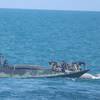DNV GL, MPA Join for 3D Printing
The classification society DNV GL has been selected to head up a Singapore-based research programme that will study the applications of additive manufacturing (AM), or 3D printing, for the maritime sector.
In a joint industry program (JIP) initiated by the Maritime and Port Authority of Singapore (MPA), DNV GL will team up with ten member companies of the Singapore Ship Association (SSA) to examine how spare parts produced by 3D printers can help the capital-intensive industry to cut costs and downtimes.
The goal of the JIP is to establish a list of commonly-ordered parts that are highly feasible for 3D printing with or without certification respectively not feasible for 3D printing. The findings aim to encourage more maritime players to adopt AM to optimize their spare parts supply, and overall to strengthen Singapore’s value proposition as a one-stop shop with port services supporting a diverse ecosystem of shipping lines and maritime companies.
To date, the challenges of marine parts inventory include not only inventory costs, low utilization rates and parts obsolescence, but also complex supply chains and accompanying logistics costs. AM technology has the potential to revolutionize the way marine spare parts are designed, manufactured, and distributed to end users. In addition, on-site manufacturing for maintenance becomes an important application of AM.
“Additive manufacturing holds great opportunities for the maritime industry,” said Cristina Saenz de Santa Maria, Regional Manager South East Asia, Pacific & India, DNV GL – Maritime. “As the world’s leading classification society our aim is to explore this technology in a way that customers can have the same confidence in AM products as they have in any other approved by class.”
The Singapore Shipping Association (SSA) underlined the disruptive potential of AM, which so far has seen only a moderate uptake in the industry. "This technology can help not only to reduce costs of producing spare parts for vessels, but also to radically reinvent the production and logistics including using completely new and more suitable materials," said Steen Brodsgaard Lund, Chairman of the SSA Technical Committee. "Elements potentially replaced by modern materials include brass components," he explained.
AM as an enabling technology for innovation and productivity improvements in the maritime sector is one part of Singapore's Sea Transport Industry Transformation Map, to grow the maritime sector's value-add by $4.5 billion and create more than 5,000 highly qualified jobs by 2025. In 2015 Singapore also saw the start-up of a National Additive Manufacturing Innovation Cluster (NAMIC) to speed up industrial adoption of AM.
In 2018, DNV GL also released the first approval of manufacturer (AoM) scheme for additive manufacturing producers wishing to supply products that comply with the DNV GL rules and standards, following the publication of the first guideline for the use of AM in the maritime and oil & gas industries in 2017.












